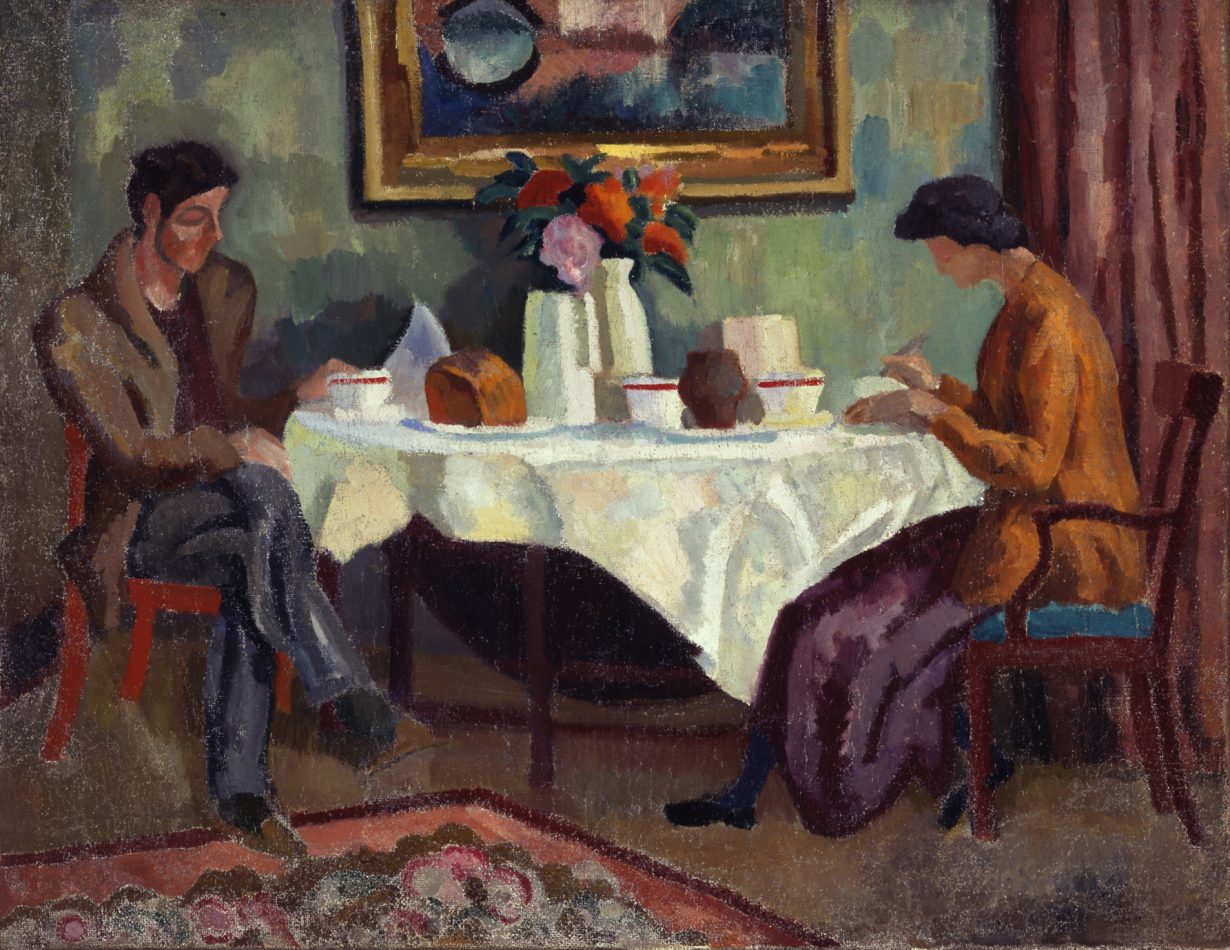A fashion journalist writes about Virginia Woolf, Vanessa Bell and their circle through their clothing choices

In The Voyage Out (1915) Virginia Woolf writes: ‘In the streets of London where beauty goes unregarded, eccentricity must pay the penalty, and it is better not to be very tall, to wear a long blue cloak, or to beat the air with your left hand.’ Fashion journalist Charlie Porter’s new book is about the long blue cloaks. The Bloomsbury members wore them in their own way; those who couldn’t, like John Maynard Keynes, wanted to.
In the many photos Porter has amassed in this book, we see clothes that were dowdy, often rumpled, stained and safety-pinned together. ‘He [Lytton Strachey] pointed his finger at a stain on Vanessa’s white dress,’ quotes Porter from Woolf ’s posthumously published Moments of Being (1972). ‘“Semen?” he said.’ Unkempt, askew, Bloomsbury clothes waved a middle finger at Victorian convention and dispensed with fashion that packaged women for marriage.
The escape of the then Virginia Stephen and her sister, Vanessa, to Bloomsbury ended for them an era of whalebone corsets and filmy ballgowns. They instructed houseguests like T.S. Eliot to ‘bring no clothes’ because no one dressed for dinner anymore. The sisters’ emancipation from polite society manifested in the form of dresses that fell uncorseted past the waist down to the ankles. Vanessa wore painter smocks. She concocted work dresses with safety pins and odd flaps of cloth. For the Bloomsbury women, clothes were antifashion, especially compared to the short, though corset-free, flapper dresses that quickly followed. Their garments were the first line of dissent, a cladding that fenced off a mental ‘room of one’s own’ in which to think and work uninterruptedly.
But while Woolf slouched in shapeless cardigans, she also wished she dressed better. She warned Morrell before visiting that she and Leonard lived like ‘superior mechanics’. To Woolf, clothes were a mental wrestling match between their wearer and the outside world. Frock consciousness was her slippery idea that clothes perform our shifting inner states – our moods, who we love, how we identify. But, also, that ‘it is clothes that wear us and not we them; we may make them take the mould of arm or breast, but they mould our hearts, our brains, our tongues to their liking’. That is from Orlando, Woolf ’s 1928 ‘biography’ of an Elizabethan man who wakes up one day a woman.
The sexual and gender free-for-all of the Bloomsbury crowd makes it in tune with our time. Presiding over a recent Dior men’s show was the queer muse Duncan Grant, Vanessa Bell’s sometime lover and a fellow artist. An apron top in the collection approxi- mates one Grant often wore painting, with no shirt underneath and straps slipping suggestively off shoulders. E. M. Forster and, especially, Keynes, though, never dared bare skin. Seamed with money and domination, the Keynesian tailored suits ended up, as Woolf put it in Orlando, wearing the econom- ist more than he wore them: in 1937 he accepted the vice-presidency of the British Eugenics Society.
Bring No Clothes is a loping gonzo analysis of Bloomsbury dress threaded through with the author’s self-actualisation. Following Bell’s experiments, he decides to make his own clothes, snaps of which are also in the book. The cobbled-together garments give Porter a freedom that Bloomsbury understood lay in something as superficial as clothes.
It is why artist/critic Roger Fry takes on the top hat in his 1888 essay ‘Shall We Wear Top Hats?’. He pleads with this totem of Victorian heterosexual patriarchy to ‘grant to me of thy mercy some remnant of individuality some breath of air that I be not suffocated altogether’. Fry and his circle wanted to be left alone to breathe – to do, work and love exactly as they pleased. It was a long blue cloak they wanted to wear and no penalty to pay.
Bring No Clothes: Bloomsbury and the Philosophy of Fashion by Charlie Porter. Particular Books, £20 (hardcover)